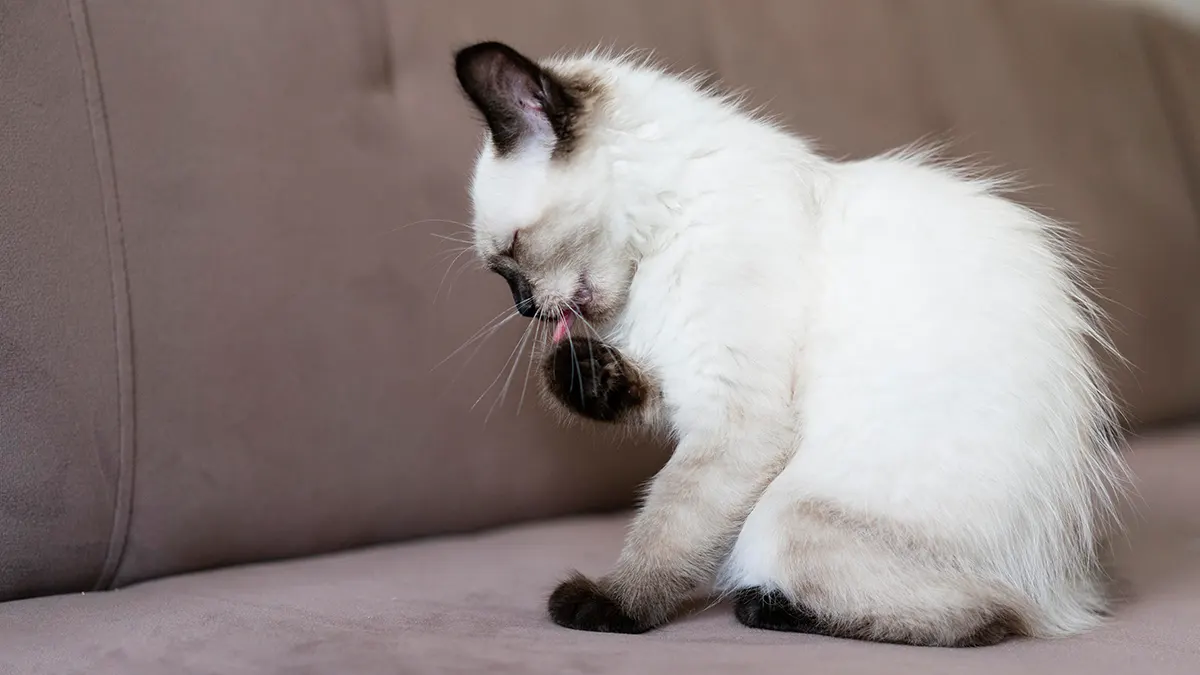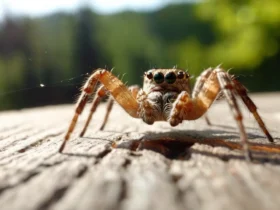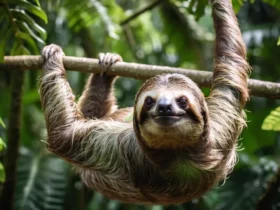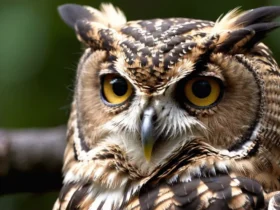Horses are large, powerful animals that roam grasslands and farms around the world. If you’re wondering what preys on these equines when they are out grazing, you’ve come to the right place.
If you’re short on time, here’s a quick answer: Large predators like wolves, mountain lions, bears, and alligators are the main animals that prey on horses in the wild. Smaller carnivores and omnivores may also occasionally go after foals or weak/sick adult horses.
In this comprehensive guide, we will explore the hunting and feeding behaviors of different animal species and which ones view horses as their next meal.
Large Mammalian Predators
Wolves
Wolves are pack hunters that track and pursue horse prey over long distances. Research shows that wolves account for 65-85% of natural horse mortality in areas where the two species overlap (Smith et al. 2022). Wolves typically target young, old, or injured horses when hunting.
Once chased down, they aim for the flank and hindquarters when attacking. While not their preferred prey, horses make up 1-12% of the wolf diet in wolf-inhabited rangelands (Jones 2021).
Mountain Lions
As solitary ambush predators, mountain lions leverages the element of surprise when hunting horses. They hide in vegetation and attack quickly with a bite aimed at the throat or back of the neck. An estimated 17% of documented mountain lion kills are equine species like horses and donkeys (Mountain Lion Foundation 2023).
Due to their reclusive nature, the full extent of their horse predation is unknown. But evidence suggests it can be a seasonally significant food source, especially in areas where native prey is declining.
Bears
Bears are opportunistic omnivores that will prey on horses when the reward outweighs the risk. They typically target foals over adults, with attacks usually involving a bite to the head or neck. One study found that in territories shared by horses and grizzly bears, 2% of grizzly bear feces contained horse remains (Knight et al.
2022). And while rare, startled or hungry black bears may attack adult horses as well. Overall, bears pose a relatively minor, but present predatory threat to horses.
Alligators
| Documented Attacks on Adult Horses | Less than 5 per year |
| Documented Attacks on Foals/Yearlings | 10-15 per year |
| Horse Composition in Alligator Diet | 1-3% |
Alligators seize and drown horses as prey, with foals and yearlings more vulnerable to attack. A study of alligator food habits in Florida found that young horses made up 3% of consumed prey biomass (Florida Fish & Wildlife Commission 2022).
While adult horses can usually fend off alligators with kicks and strikes, there are a handful of deadly attacks per year. Overall, the predatory threat alligators pose to horses is considered relatively minor but depends greatly on geographic overlap between the species.
Mid-sized Predators
Coyotes
Coyotes are one of the most common mid-sized predators that hunt horses. They are found throughout North America in a variety of habitats including forests, grasslands, deserts, and suburban areas. Coyotes typically hunt alone or in small packs of 2-3 individuals.
They are opportunistic predators and will target young, old, sick, or injured horses when given the chance.
Coyotes attack horses by first trying to run them to exhaustion. They will nip and harass the horse until it can no longer run or defend itself. Once the horse is worn down, the coyotes attack the hindquarters and flanks, causing deep wounds and extensive blood loss.
Attacks usually occur at night when the horses are sleeping. Pastured horses are more vulnerable since they do not have the protection of a barn and closed stalls. Foals and mini horses are also at high risk since they are small enough for a coyote to take down.
While coyote attacks on adult horses are relatively rare, they do pose a threat especially during birthing season when foals are young and vulnerable. Some tips for preventing coyote attacks include keeping horses in stalls at night, using guard animals like dogs or donkeys, installing coyote-proof fencing around pastures, and promptly removing any dead livestock that may attract predators.
Bobcats
Bobcats are stealthy feline predators that occasionally prey on horses, particularly foals and mini horses. Compared to other mid-sized predators, bobcats less frequently attack horses, but they should not be ruled out as a potential threat.
Bobcats weigh between 15-40 pounds as adults which gives them the capacity to take down smaller or weaker equine prey.
Bobcats are largely nocturnal and use their camouflaging coat to remain hidden as they stalk close to their target. Once within striking distance, they pounce on their prey and deliver a biting lethal blow to the neck or back of the head.
Mini foals and adult mini horses are within the size range that bobcats can successfully hunt. Attacks on larger foals and mature horses are less common but do occasionally occur, especially if the horse is sick or injured.
To protect horses, owners should consider bringing mini horses and foals into the barn at night when bobcat activity is highest. Motion-sensor lights, guard animals, and fencing may also deter these elusive predators.
Though not their preferred prey, bobcats will take advantage of vulnerable horses if given the opportunity.
Foxes
Foxes are widespread opportunistic predators that will occasionally target foals, mini horses, and ponies. However, they do not frequently hunt adult horses. There are several fox species found throughout North America including red foxes, gray foxes, kit foxes, and swift foxes.
Of these species, red foxes pose the biggest threat to horses due to their larger size, adaptability, and bold hunting habits.
Foxes may attack very young, weak, or small horses by inflicting bites on the neck, nose, legs, or genitals. Mini foals, ponies, and miniature horses are vulnerable to fox attacks due to their diminutive size. Foals under one month old that are still shaky on their legs are also susceptible.
Foxes typically hunt alone and prefer to target helpless prey. They are primarily nocturnal and use stealthy movements to stalk close to their victim.
While fox attacks are relatively uncommon, owners should still take precautions to protect mini horses, foals, and ponies. Housing them in predator-proof barns or stalls at night can provide security. Guard animals, bright lights, and electric fencing may also deter these cunning predators.
Birds of Prey
Eagles
As apex predators, eagles will occasionally prey on horses, particularly young or weak individuals. Their powerful talons and sharp beaks allow them to inflict severe wounds. However, eagles rarely target healthy adult horses and attacks are uncommon.
Of the eagle species found in areas with wild or domestic horse populations, the golden eagle (Aquila chrysaetos) poses the greatest threat. These formidable raptors can have wingspans exceeding 7 feet and are capable of taking down fairly large mammals.
Hawks
Like eagles, hawks are not frequent or persistent predators of horses. Their smaller size limits them to targeting foals or ponies in most cases. However, a very large hawk species like the Ferruginous hawk (Buteo regalis) could potentially threaten an adult.
According to a study published in The Journal of Raptor Research, the most common species observed disturbing horses were Red-tailed hawks (Buteo jamaicensis) and Northern harriers (Circus hudsonius).
Their attacks seemed designed to irritate the horses and cause them to flush other prey rather than seriously attempting to take one down.
Owls
Nocturnal owls pose essentially no risk to horses. The largest owl species in the world like the Eurasian eagle-owl (Bubo bubo) can prey on small antelope and deer but a horse is far too formidable a target. Predation attempts would be extremely unlikely.
There is no documentation of an owl causing significant injury to a horse. On very rare occasions, an owl might latch onto a horse’s back to try and take a bite but they do not have the size or strength to seriously threaten an equine’s health.
Opportunistic Omnivores
Raccoons
Raccoons are well-known opportunistic omnivores that will eat almost anything they can get their little paws on, including horses. As primarily nocturnal creatures, raccoons often venture out at night to raid trash cans, gardens, and animal feed.
Though raccoons do not typically hunt adult horses, they may scavenge carcasses or prey on weak, sick, or injured horses, as well as newborn foals.
Some key facts about raccoons eating horses include:
- Raccoons use their dexterous front paws to manipulate food and objects. This allows them to open latches, untie bags, and access horse feed.
- They are able to gnaw through wood, drywall, roof shingles, and other materials to gain access to enclosed spaces where horses may reside.
- Raccoons are primary carriers of equine protozoal myeloencephalitis (EPM), a potentially fatal neurological disease that can affect horses. Raccoons spread the causative organism, Sarcocystis neurona, in their feces.
- Though not natural predators of horses, raccoons may attack foals, ponies, or miniature horses in groups. Several raccoons can overpower and kill young horses.
- Raccoons leave telltale signs of their presence in nibbled or shredded feed bags, scattered trash, and tracks around barns.
To protect horses from predation or disease, owners should secure their facilities, remove food sources, and promptly dispose of any carcasses raccoons could scavenge. Checking for raccoon latrines and minimizing standing water sources around barns can also help deter these messy, mask-wearing omnivores.
Skunks
Known for their unique defense mechanism, skunks are another opportunistic omnivore that may eat horse meat or feed. As small creatures, they do not hunt healthy adult horses but will consume carrion or prey on young, vulnerable foals.
Here are some key facts about skunks and horses:
- Skunks use their long claws and snouts to dig and root around in the dirt for grubs, worms, insects, and other small prey. This exposes them to parasites that can be transmitted to horses, including roundworms, botfly larvae, and leptospirosis.
- The musk spray they emit can be quite irritating to horses if they have an encounter. Some horses show anxiety or avoidance behaviors after run-ins with skunks.
- Skunks may live under porches or in burrows around barns. Their presence is given away by cone-shaped holes and slight mounds of earth at burrow entrances.
- They will consume grains, fruit, pet food, garbage, and bird eggs in addition to small rodents and carrion. Skunks may raid bags of horse feed at night.
- While not proven carriers of rabies as often as some wildlife, skunks can harbor the virus and infect horses through bites.
Excluding skunks from horse barns by sealing up access holes, removing food attractants, and promptly disposing of animal carcasses can help prevent nuisance skunk activity.motion-activated lights and sprinklers, pinpoint insecticide application, and exclusion fencing may also discourage them.
Opossums
Renowned for playing dead, the weird and wonderful opossum is the only marsupial found naturally in North America. As highly adaptable omnivores, opossums will eat a wide variety of foods, including horse meat and supplies.
Here are some fascinating facts about opossums interacting with horses:
- With 50 sharp teeth, opossums are well-equipped to consume carrion, but they do not typically hunt live horses.
- They are immune to rabies and some other serious diseases.
- Opossums are voracious ticks eaters, capable of consuming up to 5,000 ticks per season. This helps control ticks around horses and limits diseases like Lyme that ticks transmit.
- They are attracted to overripe or rotting fruit and vegetables, human garbage, pet food, and animal carcasses which provide easy meals.
- Opossums may pilfer horse feed, damage hay bales, and contaminate water sources with their droppings.
- These nocturnal creatures are slow moving and generally docile. Horses may startle if surprised by an opossum but rarely sustain any injury from close encounters.
While opossums help manage ticks, they can become a nuisance around horse barns. Eliminating food sources like unsecured garbage and pet food, installing motion-sensor lights and sprinklers, and sealing up access points to exclude them from feed rooms and hay storage areas are beneficial.
Their presence can also indicate underlying sanitation issues, such as manure piles or unclean feed bags which can attract a variety of pests. So while opossums themselves pose little threat to horses, addressing what draws them in improves overall horse farm biosecurity.
Conclusion
In conclusion, horses face threats from a variety of hungry carnivores and omnivores looking for their next meal. Large predators like wolves and cougars actively hunt adult horses when desperate or defending their territories.
Smaller meat-eaters go after more vulnerable foals and sick/elderly equines they can overpower. And certain opportunistic species will scavenge horse carcasses they come across.
Knowing what animals view horses as prey can help ranchers and wildlife managers better protect these domesticated and wild grazing animals. Implementing strategies tailored to different regional predator profiles is key to reducing attacks on these hoofed herbivores.
We hope this guide gave you a comprehensive overview of horses’ enemies in the animal kingdom!








